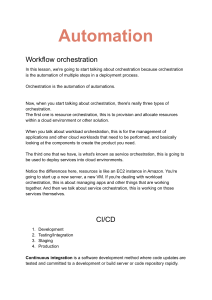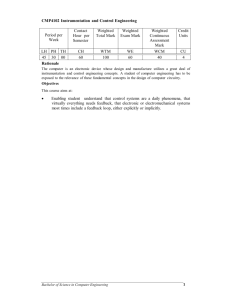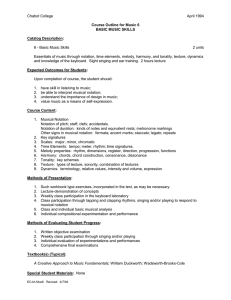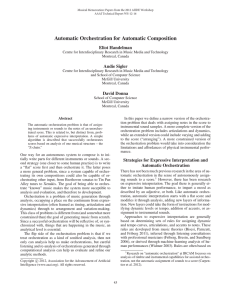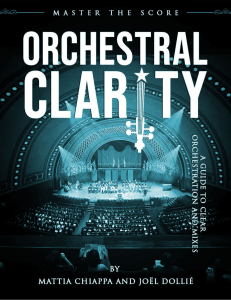Composition And Arranging
advertisement
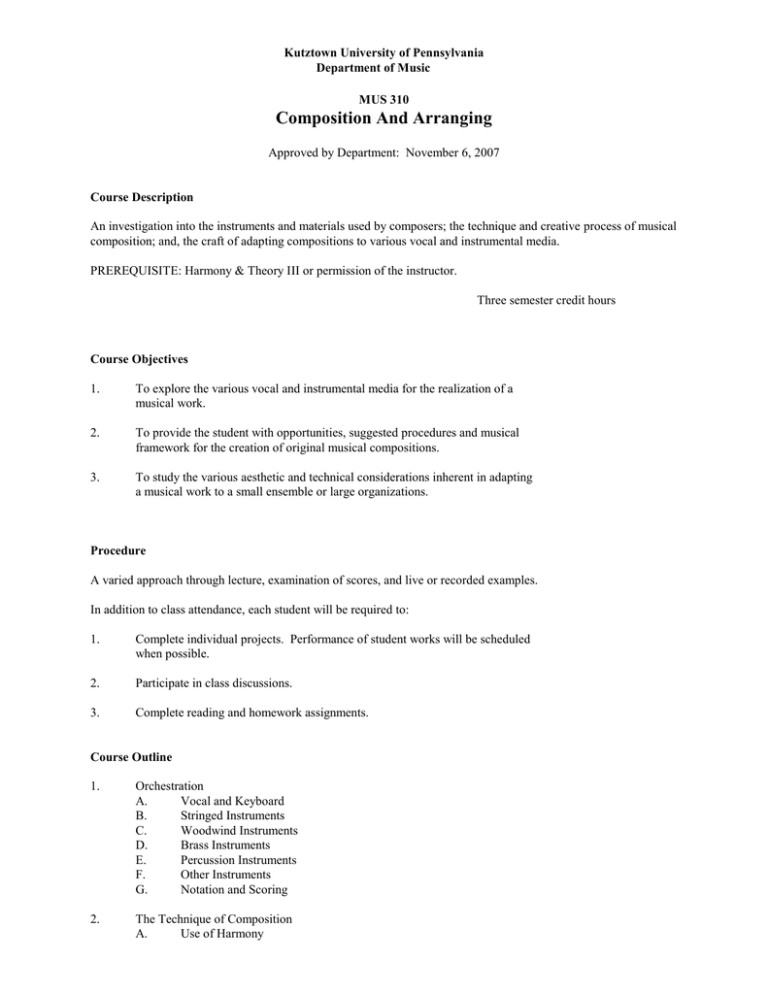
Kutztown University of Pennsylvania Department of Music MUS 310 Composition And Arranging Approved by Department: November 6, 2007 Course Description An investigation into the instruments and materials used by composers; the technique and creative process of musical composition; and, the craft of adapting compositions to various vocal and instrumental media. PREREQUISITE: Harmony & Theory III or permission of the instructor. Three semester credit hours Course Objectives 1. To explore the various vocal and instrumental media for the realization of a musical work. 2. To provide the student with opportunities, suggested procedures and musical framework for the creation of original musical compositions. 3. To study the various aesthetic and technical considerations inherent in adapting a musical work to a small ensemble or large organizations. Procedure A varied approach through lecture, examination of scores, and live or recorded examples. In addition to class attendance, each student will be required to: 1. Complete individual projects. Performance of student works will be scheduled when possible. 2. Participate in class discussions. 3. Complete reading and homework assignments. Course Outline 1. Orchestration A. Vocal and Keyboard B. Stringed Instruments C. Woodwind Instruments D. Brass Instruments E. Percussion Instruments F. Other Instruments G. Notation and Scoring 2. The Technique of Composition A. Use of Harmony B. C. D. 3. Use of Melody Counterpoint Form Transcription, Adaptation, and Arranging A. Change of Media B. Comparison of Orchestral and Band Instrumentation C. Planning an Arrangement D. Consideration of style in relationship to actual notation E. Adjustments of instrumentation in organizations with unbalanced instrumentation and/or divergent abilities of individual members. Assessment Assessment of each student’s level of accomplishment with reference to the course objectives will be based upon the following: 1. evaluation of assigned compositions and arrangements 2. exams over written material 3. evaluation of participation Instructional Resources Ades, Hawley. Choral Arranging. Delaware Water gap Shawnee Press, 1970. Adler, Samuel. The Study of Orchestration. 3rd ed. NY: Norton, 2002. Black, Dave. Essential Dictionary of Orchestration. 2nd ed. Los Angeles: Alfred Publishing, 1998. Blatter, Alfred. Instrumentation and Orchestration. 2nd ed. Belmont, CA: Schirmer, 1997. Cope, David. New Music Composition. NY: G. Schirmer, 1977. Dallin, Leon. Techniques of Twentieth Century Composition. Dubuque IA: Wm. C. Brown, 1974. Forsyth, Cecil. Orchestration. NY: Macmillan, 1949. Hagen, Earle. Scoring for Films. NY: Criterion, 1971. Hansen, Brad. The Essentials of Orchestration. Mountain View CA: Mayfield, 1991. Kennan, Kent and Donald Grantham. The Technique of Orchestration. 5th ed. NJ: Prentice Hall, 1997. Lang, Phillip J. Scoring for Band. NY: Mills Music, 1950. McKay, George Frederick. Creative Orchestration. Boston MA: Allyn and Bacon, 1963. Pooler, Frank and Brent Pierce. A New Choral Notation. NY: Walton, 1971. Rimsky-Korsakov, Nicolas. Principles of Orchestration. Scarsdale NY: Kalmus, 1912. Roig-Francoli, Miguel. Harmony in Context. Columbus, OH: McGraw-Hill, 2002. Russo, William. Composing Music. Chicago: University of Chicago Press, 1988. Rosenthal, Carl A. Practical Guide to Music Notation for Composers, Arrangers and Editors. NY: MCA Music, 1967.


